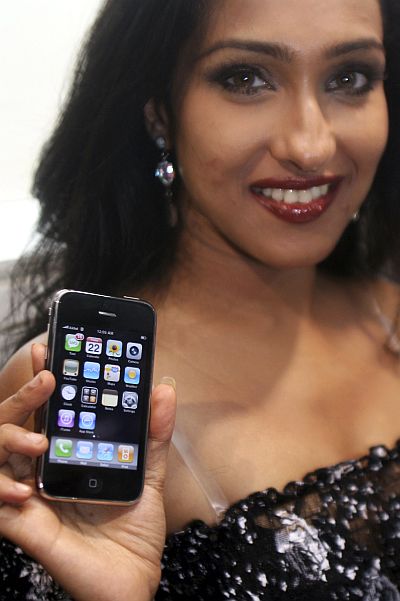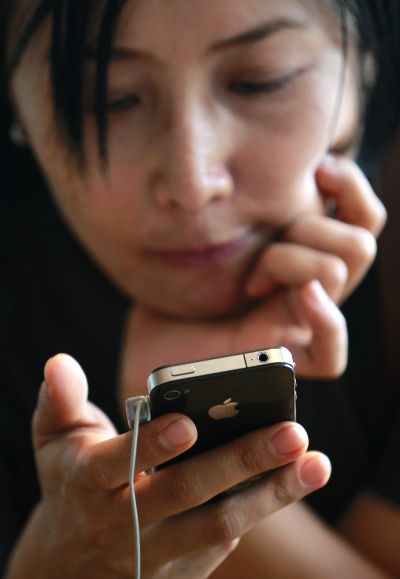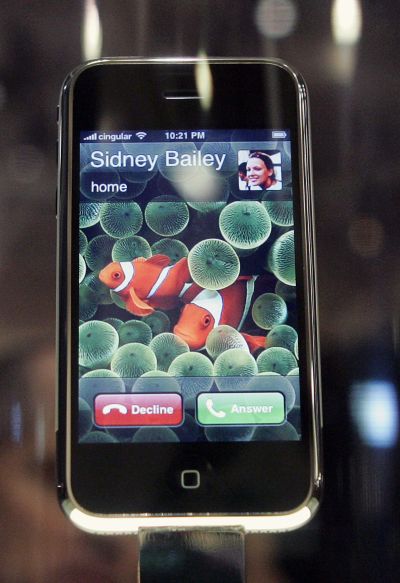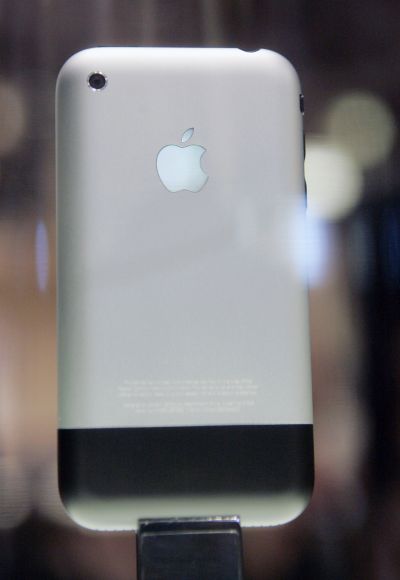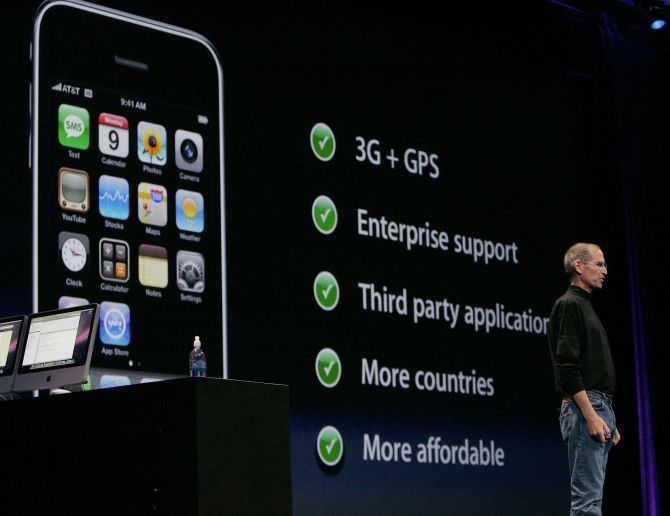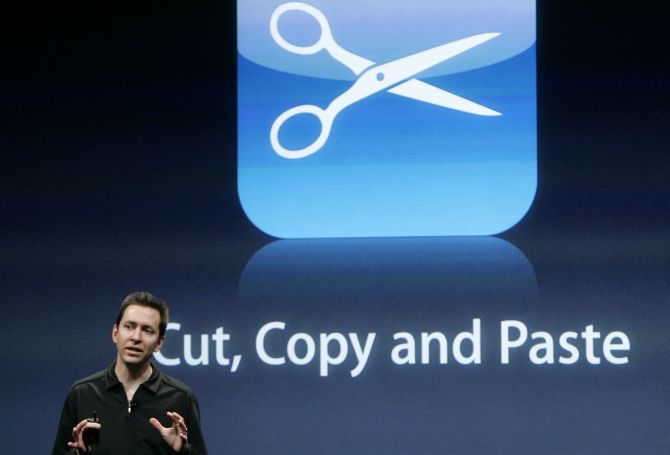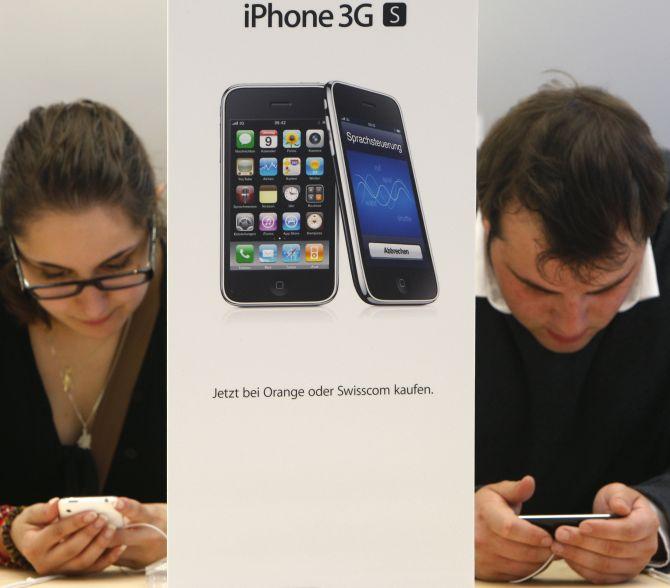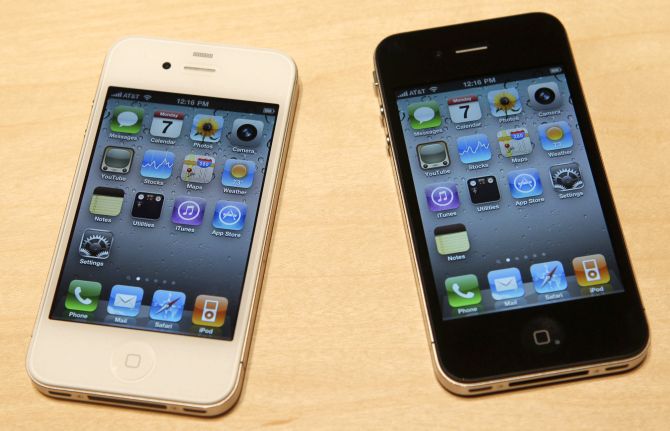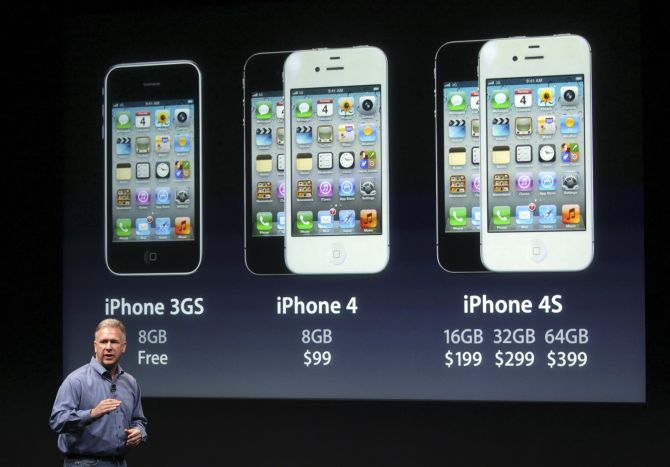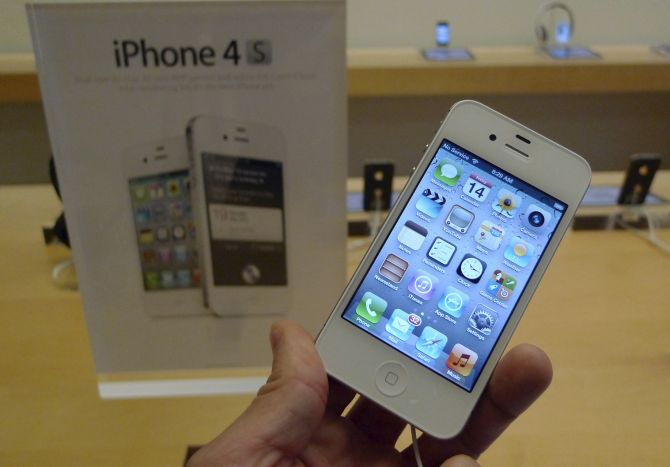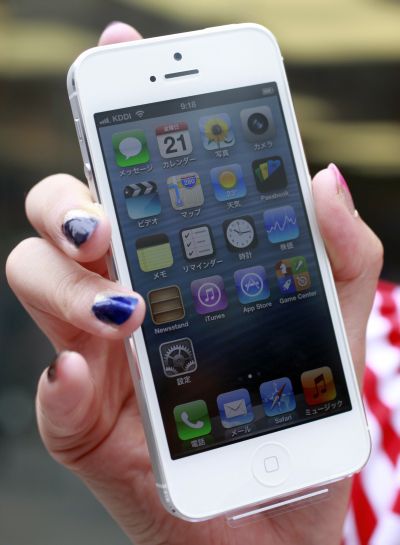 | « Back to article | Print this article |
The magical Apple iPhone through the years
On Tuesday, Apple unveiled the upgraded iPhones 5S and cheaper iPhone 5C. Since its launch in 2007, iPhone has always been the benchmark for smartphones.
If a competitor wants to get any significant marketshare, it needs to come up with a product that can be compared with the Apple device.
iPhone revolutionised the way smartphones looked, felt and worked. Apple was the first company to introduced touchscreens that can be operated by human touch. Prior to that touchscreen phones came with styluses.
The multi-touch was another feature that debuted in iPhone and later other manufacturers incorporated it in their devices.
Apple had introduced motion sensor (Accelerometer) to make it easy for users to read webpages by switch the phone from portrait mode to landscape.
It now is essential feature in every smartphone. It is needed for almost all games and and apps that perform certain function when on ‘shaking the device’.
The most revolutionary feature that kept iPhone on top through the years is the Apple App Store. The App Store features over 900,000 apps and over 50 billion downloads.
Click NEXT to read more…
The magical Apple iPhone through the years
App Store has been Apple’s trump card. It’s because of app store that many buyers ditch Android and Windows phones and opt for iPhone.
But why did Apple get into the smartphone in the first place?
The beginning
If once look at Apple’s patents; it feels the company has always toyed with the idea of making phones. But the story of iPhone has roots in the success of iPod.
Since the introduction of iPod in 2002, Steve Jobs always thought that mobile phones are a threat to its music device.
After the massive success of iPod by 2004, he wanted a presence in the mobile phones to keep iPod and iTunes relevant.
Apple reached an agreement with Motorola in 2004 by which the handset manufacturer will include iTunes in its phones. In 2005, Motorola launched ROKR E1 with iTunes, which didn’t do well. The partnership didn’t last too long.
The company then started working on a phone. And, after over two years of development finally launched iPhone on January 9, 2007.
Click NEXT to see iPhone through the years…
The magical Apple iPhone through the years
The first iPhone
It was one of the most anticipated gadgets and people had lined up for the device outside the Apple and AT&T stores to buy it. Within an hour of the device going on sale, stores started complaining of the shortages.
To avoid mishaps and burglaries, off-duty policemen were hired to guard the stores overnight.
The hype around the phone was such that a survey revealed six out of 10 American knew about the phone before it was launched.
When the first iPhone was launched, Apple did have the App Store. The phone was available in black colour only and it didn’t even have copy-paste function.
When discontinued, the phone had a total sales of 6,124,000 units.
Click NEXT to see iPhone’s specifications…
The magical Apple iPhone through the years
Key features of the first iPhone
Network: 2G
Display size: 3.5-inche
Memory options: 4/8/16 GB
Camera: 2MP (no support for video recording and no front camera)
Processor & RAM: 412 MHz & 128 MB
Sensors: Accelerometer, proximity
Click NEXT to read more…
The magical Apple iPhone through the years
iPhone 3G
It was with iPhone 3G that Apple brought in App Store, which was an instant hit. The company kept the name because the phone supported 3G networks.
It was released in June 2008, 17 months after the first device. Apple sold over a million phones within three days of launch.
Other than App Store, the phone also saw introduction of GPS and push email. Buyers had colour option of black and white.
Many basic features were still missing from the phone. On introduction, the phone still didn’t have copy-paste functions and MMS sending ability, which were resolved after updates much later. Also, the camera didn’t support video recording.
The phone did receive its fair share of criticism for software bugs and battery issues.
Many reviewers found iPhone 3G to be a great buy despite the problems.
Click NEXT to read more…
The magical Apple iPhone through the years
Key features of iPhone 3G
Network: 2G and 3G
Display size: 3.5-inch
Memory options: 8 and 16 GB
Camera: 2MP (no support for video recording and no front camera)
Processor & RAM: 412 MHz & 128MB
Sensors: Accelerometer, proximity
Available apps in 2008: 10,000
Apps download in 2008: Around 300 million
Click NEXT to read more…
The magical Apple iPhone through the years
iPhone 3GS
A year after iPhone 3G, Apple introduced its new device that had a better camera, video recording capability, electronic compass, and was twice as fast as its predecessor.
It received mixed reviews from experts because they felt the updates were not too significant.
iPhone 3GS also had its share of problems, too. The biggest was overheating of the phone that even cause discolouration of the device in some cases.
This device maintained the record set by iPhone 3G and saw a sale of over a million units over the weekend.
Click NEXT to read more…
The magical Apple iPhone through the years
Key features of iPhone 3GS
Network: 2G and 3G
Display size: 3.5-inch
Memory options: 8/16/32 GB
Camera: 3.15 MP (no front camera)
Processor & RAM: 600 MHz & 256 MB
Sensors: Accelerometer, proximity, compass
Available apps in 2009: 100,000
Apps download in 2009: Over 2 billion
Click NEXT to read more…
The magical Apple iPhone through the years
iPhone 4
The phone had many firsts to its credit. Apple started using Retina Display from iPhone 4 onwards, which boasts a 326 ppi pixel density.
The phone also included a front camera for the first time and included a flash for the back camera. It also had support for HD video recording.
Starting with this phone, Apple users could conduct a video conference with each other using FaceTime.
Apple also introduced Gyroscope sensor that complements accelerometer, and helps in motion detection, which made gaming more fun and smooth.
As with earlier devices, this iPhone too had its share of issues. Shortly after the phone was launched, some consumers reported that signal strength of the phone was reduced on touching the lower left edge of the phone resulting in call drops.
Click NEXT to read more…
The magical Apple iPhone through the years
Initially, Apple ignored the complaints. Later when some users decided to sue Apple and its partners for concealment, negligence, intentional misrepresentation and defective design, the phone manufacturer sprang into action.
Apple started providing free covers called Bumpers that prevented direct contact with the antenna.
Despite the issues, reviewers across gave thumbs up the iPhone 4.
In 2011, two iPhone 4 equipped with a special application were taken to the International Space Station. The devises were used in various experiments.
iPhone 4 broke all previous records of sales. Apple sold over 1.7 million devices within three days of its launch.
Click NEXT to read more…
The magical Apple iPhone through the years
Key features of the phone
Network: 2G and 3G
Display size: 3.5-inch
Memory options: 8/16/32 GB
Camera: 5 MP rear camera with a flash; VGA camera in the front
Processor & RAM: 1 GHz & 512 MB
Sensors: Accelerometer, gyro, proximity, compass
Available apps in 2010: Over 300,000
Apps download in 2010: Over 7 billion
Click NEXT to read more…
The magical Apple iPhone through the years
iPhone 4S
Though the phone retained the design of iPhone 4S, it featured significant changes in hardware and software.
It was much faster than its predecessor, had an 8MP iSight on the back, and saw introduction of iCloud, iMessage, Notification Centre and Twitter integration.
The most exciting addition to the phone was intelligent personal assistant named Siri. This automated voice control system allowed users to give the iPhone commands, which it can execute and respond to.
Apple also solved the antenna problem in this phone.
Apple sold four million units of the iPhone 4S in the first three days of release.
A day after the launch of the smartphone on October 5, 2011, Apple CEO Steve Jobs passed away.
Click NEXT to read more…
The magical Apple iPhone through the years
Key features of the phone
Network: 2G and 3G
Display size: 3.5-inch
Memory options: 16/32/64 GB
Camera: 8 MP rear camera with a flash; VGA camera in the front
Processor & RAM: Dual-core 1 GHz & 512 MB
Sensors: Accelerometer, gyro, proximity, compass
Available apps in 2011: 500,000
Apps download in 2011: Over 18 billion
Click NEXT to read more…
The magical Apple iPhone through the years
iPhone 5
Apple ditched its standard 3.5-inch screen size in this device. iPhone 5 featured a bigger 4-inch display. The new phone also supported LTE (or 4G networks).
Though Apple didn’t introduce any significant features, except for Passbook, the phone had a ‘better battery performance’, had ‘two times the graphics performance’ and was "two times faster” than its predecessor.
To make the phone thinner, Apple also ditched its dock connector, and introduced a slimmer one called Lightening.
The main feature of the device was Passbook, an application that allows users to store their coupons, boarding passes and tickets digitally. Also, Passbook is capable of making mobile payments at locations that have compatible hardware.
This time, Apple was heavily criticised for it newly introduced maps, which had many serious errors. Apple apologised to the users and switched back to Google Maps.
The phone sold over 5 million units in the first three days of the launch.
Click NEXT to read more…
The magical Apple iPhone through the years
Key features of the phone
Network: 2G, 3G and 4G
Display size: 4-inch
Memory options: 16/32/64 GB
Camera: 8 MP rear camera with a flash; 1.2 MP front camera
Processor & RAM: Dual-core 1.3 GHz & 1 GB
Sensors: Accelerometer, gyro, proximity, compass
Available apps in 2011: Over 700,000
Apps download in 2011: Over 35 billion
Click NEXT to read more…
The magical Apple iPhone through the years
iPhone 5S
On Tuesday, Apple introduced an upgrade to iPhone 5 and also a cheaper smartphone.
In iPhone 5S, the company has introduced Fingerprint sensor. This feature allows the phone to be unlocked after verifying the fingerprint of the user. This technology will also be used for authorising transactions on the phone.
Apple also introduced a 64-bit processor for the iPhone 5S, first ever on a smartphone.
Though the camera on the phone is still an 8 MP one, the company has made significant improvement to make the pictures sharper and more natural.
A new flash for the camera is also introduced. It has a dual ‘True Tone’ LED flashes that balances the colour temperature.
Apple has introduced new colours for the smartphone. Other than the existing white, iPhone 5S will be available in silver and gold.
Click NEXT to read more…
The magical Apple iPhone through the years
iPhone 5C
To boost sale in markets such as India and China, Apple will introduce cheaper iPhone 5C.
The phone will use the same chip, A6, which comes in iPhone 5. The phone does not include fingerprint recognition.
The back case of the phone will be available in blue, green, red, yellow, and white colours, made of polycarbonate instead of the aluminium found on iPhone 5 and 5S.
Most of the specification of the phone is similar to that of iPhone 5, except for the battery that will be slightly bigger.
